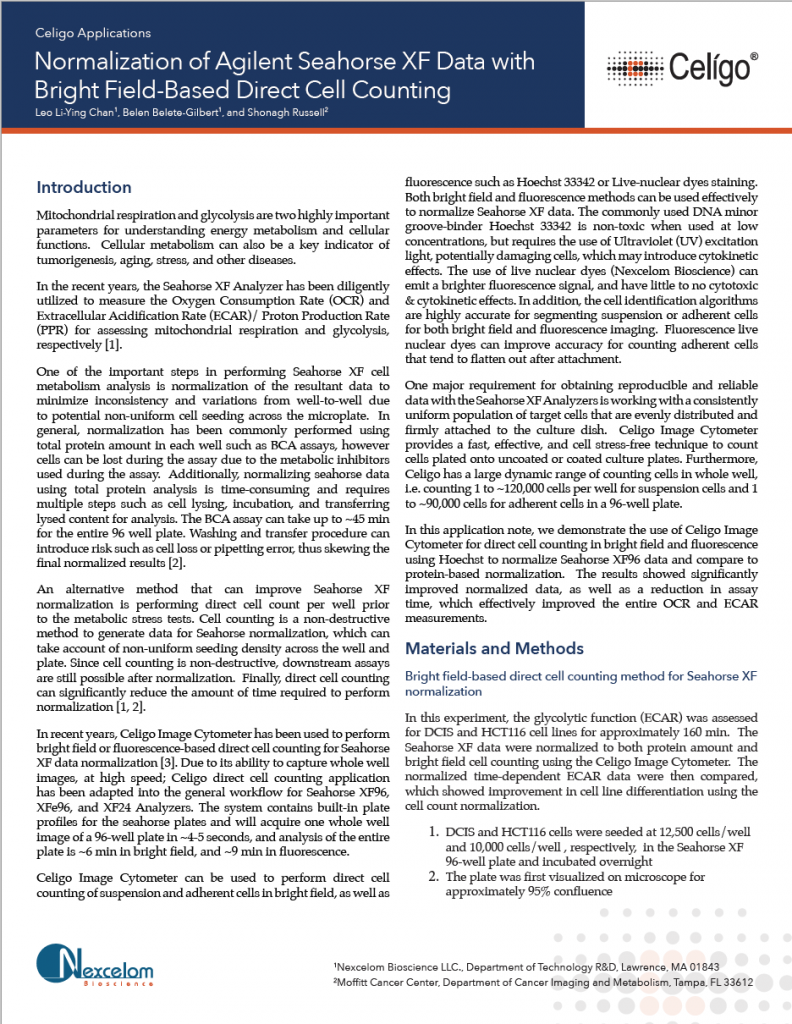Normalization of Agilent Seahorse™ XF Data with Bright Field-Based Direct Cell Counting
Mitochondrial respiration and glycolysis are two highly important parameters for understanding energy metabolism and cellular functions. Cellular metabolism can also be a key indicator of tumorigenesis, aging, stress, and other diseases.
In the recent years, the SeahorseTM XF Analyzer has been diligently utilized to measure the Oxygen Consumption Rate (OCR) and Extracellular Acidification Rate (ECAR)/ Proton Production Rate (PPR) for assessing mitochondrial respiration and glycolysis, respectively [1].
One of the important steps in performing SeahorseTM XF cell
metabolism analysis is normalization of the resultant data to
minimize inconsistency and variations from well-to-well due
to potential non-uniform cell seeding across the microplate. In
general, normalization has been commonly performed using
total protein amount in each well such as BCA assays, however
cells can be lost during the assay due to the metabolic inhibitors
used during the assay. Additionally, normalizing SeahorseTM
data using total protein analysis is time-consuming and requires
multiple steps such as cell lysing, incubation, and transferring
lysed content for analysis. The BCA assay can take up to ~45 min
for the entire 96 well plate. Washing and transfer procedure can
introduce risk such as cell loss or pipetting error, thus skewing the final normalized results [2].

